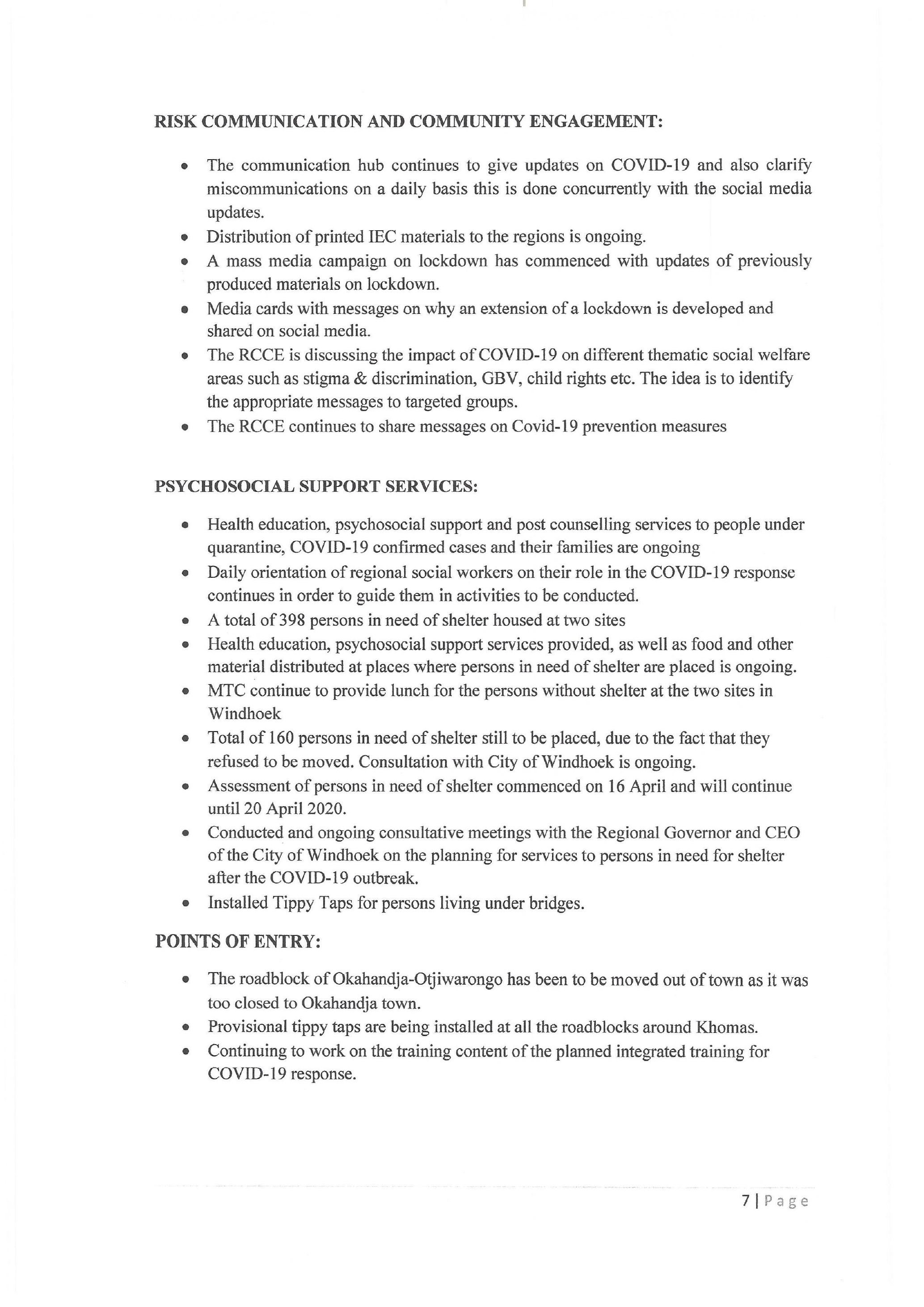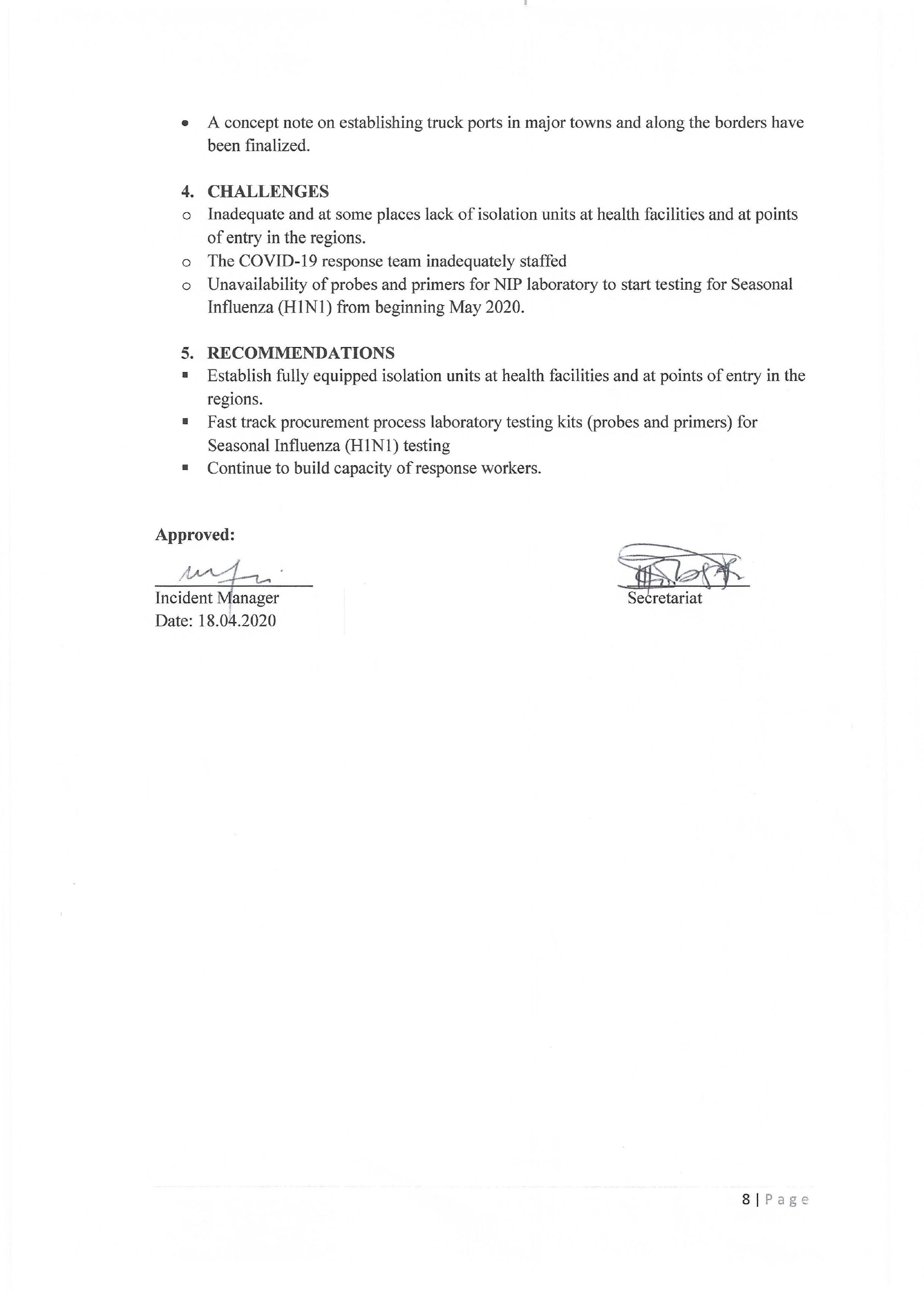
e Consolidating IMS/EOC organogram and harmonizing SOPs and TORs from all
thematic pillars for submission to IM and senior management.
e National Health Emergency Management Committee meeting on COVID-19 held on
17 April 2020
CASE MANAGEMENT
e Out of the 16 cumulative confirmed cases, 6 recovered, and have been discharged,
after testing negative for COVID-19 at 48 hours interval.
e The other 10 confirmed cases are in stable condition and all are asymptomatic.
e Conversion of casualty department at Windhoek Central Hospital (WCH) into a
highly infectious referral ICU to be completed on 22 April 2020.
e A 12-bed Isolation Unit has been constructed at WCH, furnishing and equipping of
the facility to be finalized on 20 April 2020.
e Rhino Garments’ building renovation to be repurposed as an isolation facility.
o The memorandum of understanding between MoHSS and private hospitals are
being prepared on the renovation and operation of the facility.
e Katutura State Hospital (KSH) TB ward being re-purposed into a COVID-19 ward.
e Four Private hospitals in Windhoek (Mediclinic, Lady Pohamba, Rhino Park, and
Roman Catholic private hospital) have been designated as the private hospitals for the
response of COVID-19 with a combined total of 8 ICU beds and 32 beds for moderate
to severe cases.
o COVID-19 patients with health insurance cover are eligible to access care in
any of the 4 designated facilities
e Training of Health care workers (from different wards and from private facilities) on
case management and IPC is conducted daily at WCH, KSH, and Robert Mugabe
Clinic.
e Bi-weekly ZOOM training sessions for Health Care Workers is ongoing.
LOGISTICS:
e Facilitation of the allocation of quarantine facilities in the country and transport for
discharged people from quarantine facilities is ongoing.
e Distributed a total 1256 PPE to regions,
e Provision of commodities’ specifications and verification for procurement is being
done regularly
e Three hundred and thirty one (331) personnel appointed since 13 March 2020.
e Appointment letters signed for additional personnel to come on board to assist in the
response are as follow; 258 community health workers, 6 emergency care
practitioners, 38 enrolled nurses, and 5 medical officers.
















